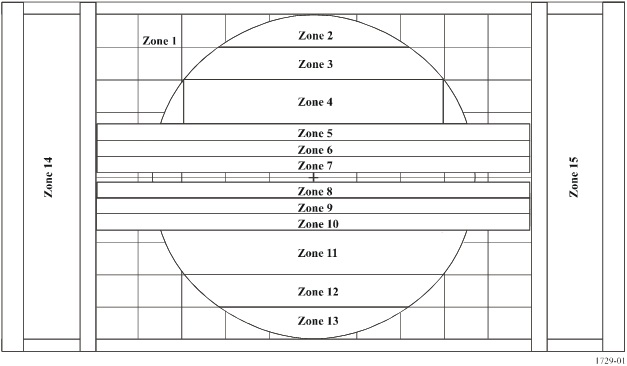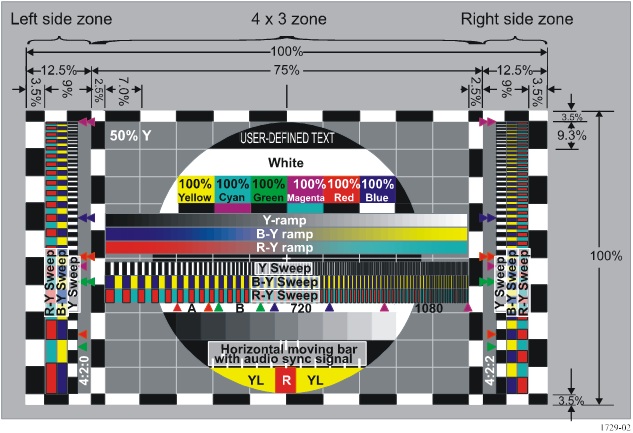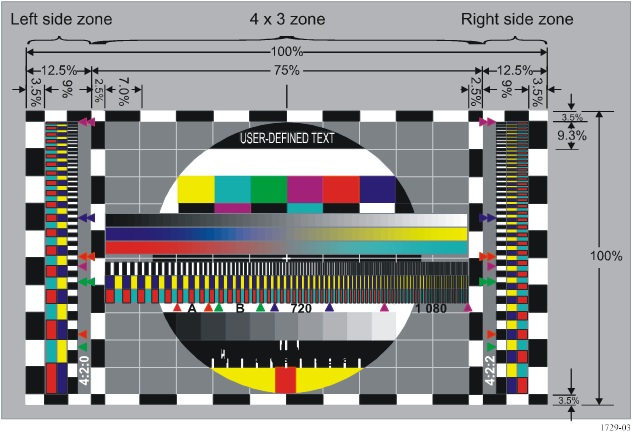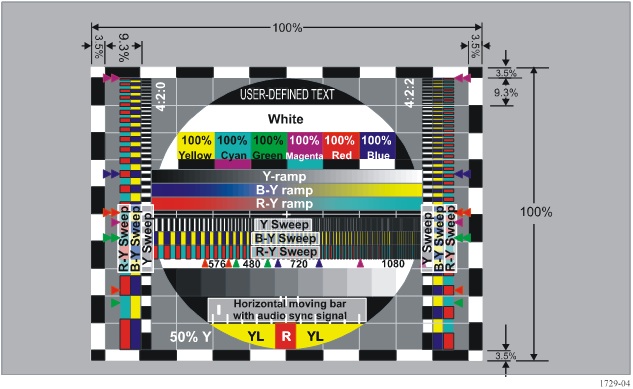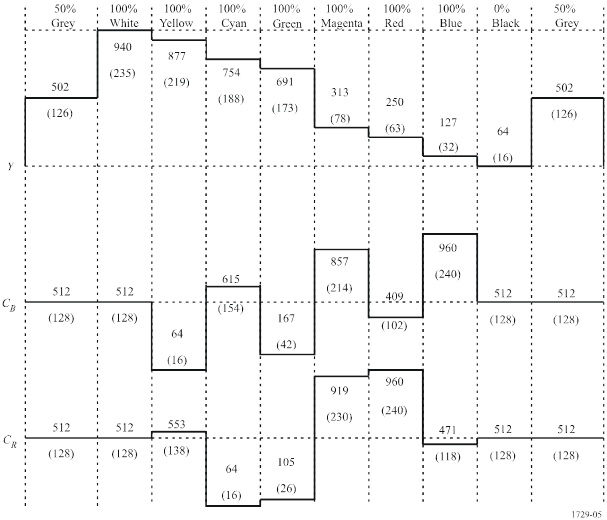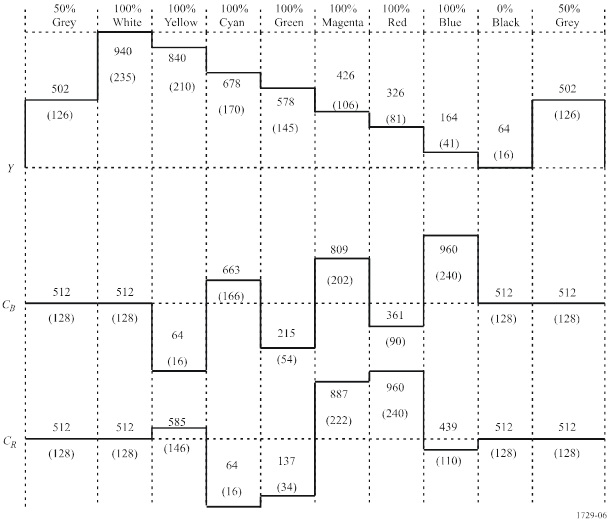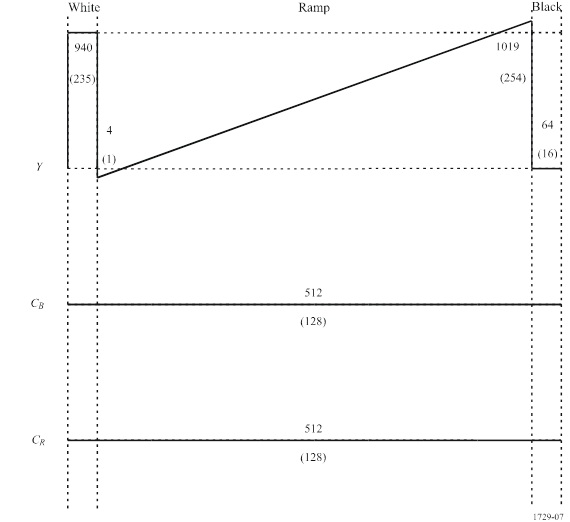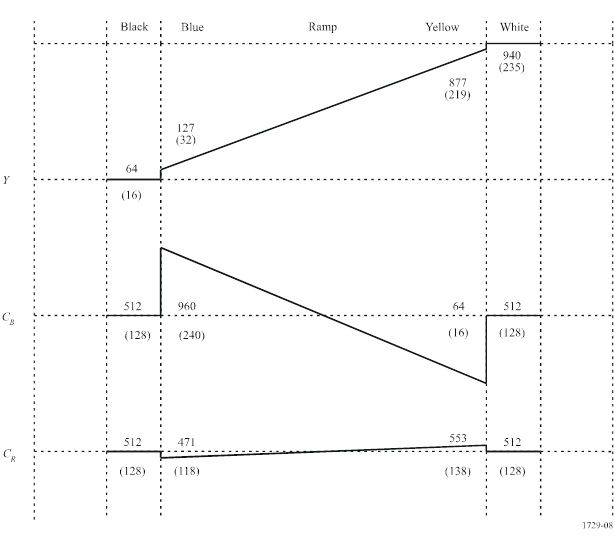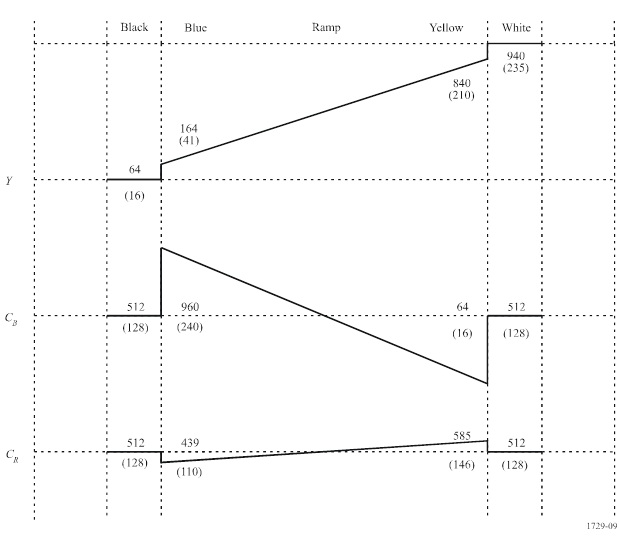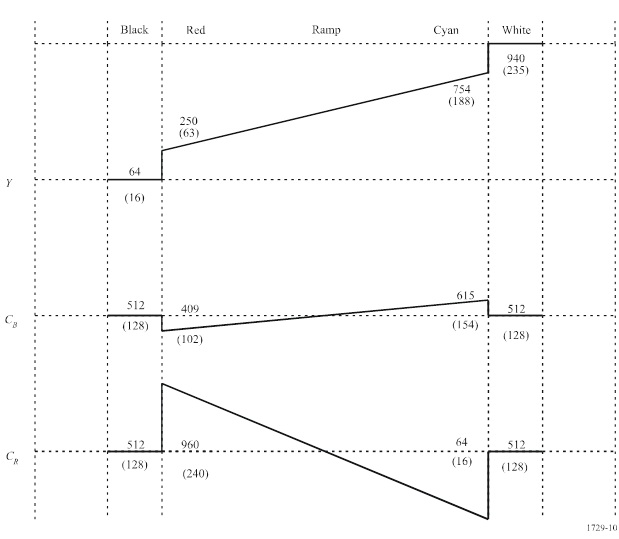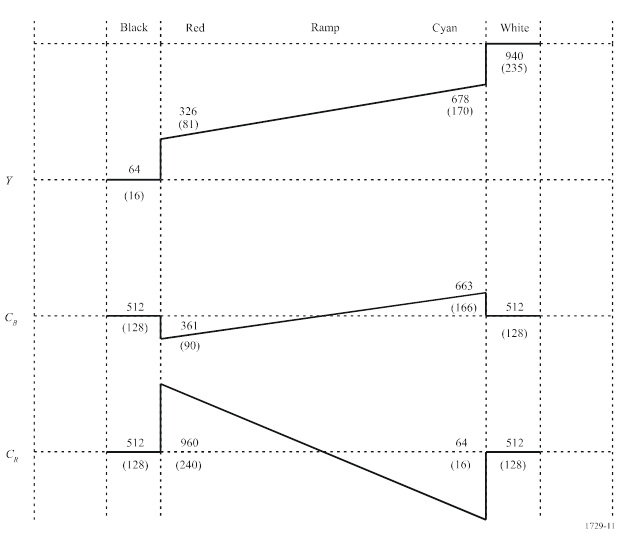|
Recommendation ITU-R BT.1729 |
|||||||||||||||||||||||||||||||||||||||||||||||||||||||||||||||||||||||||||||||||||||||||||||||||||||||||||||||||||||||||||||||||||||||||||||||||||||||||||||||||||||||||||||||||||||||||||||||||||||||||||||||||||||||||||||||||||||||||||||||||||||||||||||||||||||||||||||||||||||||||||||||||||||||||||||||||||||||||||||||||||||||||||||||||||||||||||||||||||||||||||||||||||||||||||||||||||||||
|
Common 16:9 or 4:3 aspect ratio digital television reference test pattern
|
|||||||||||||||||||||||||||||||||||||||||||||||||||||||||||||||||||||||||||||||||||||||||||||||||||||||||||||||||||||||||||||||||||||||||||||||||||||||||||||||||||||||||||||||||||||||||||||||||||||||||||||||||||||||||||||||||||||||||||||||||||||||||||||||||||||||||||||||||||||||||||||||||||||||||||||||||||||||||||||||||||||||||||||||||||||||||||||||||||||||||||||||||||||||||||||||||||||||
|
BT Series Broadcasting service television
The role of the Radiocommunication Sector is to ensure the rational, equitable, efficient and economical use of the radio-frequency spectrum by all radiocommunication services, including satellite services, and carry out studies without limit of frequency range on the basis of which Recommendations are adopted. The regulatory and policy functions of the Radiocommunication Sector are performed by World and Regional Radiocommunication Conferences and Radiocommunication Assemblies supported by Study Groups. Policy on Intellectual Property Right (IPR)ITU-R policy on IPR is described in the Common Patent Policy for ITU-T/ITU-R/ISO/IEC referenced in Annex 1 of Resolution ITU-R 1. Forms to be used for the submission of patent statements and licensing declarations by patent holders are available from http://www.itu.int/ITU-R/go/patents/en where the Guidelines for Implementation of the Common Patent Policy for ITU‑T/ITU‑R/ISO/IEC and the ITU-R patent information database can also be found.
RECOMMENDATION ITU-R BT.1729* Common 16:9 or 4:3 aspect ratio digital television reference test pattern (Question ITU‑R 97/6)
Scope This Recommendation specifies a reference test pattern which may be used with any of Recommendations ITU‑R BT.601, ITU-R BT.1358, ITU‑R BT.1543 or ITU‑R BT.709. The pattern is designed for use in either 16:9 aspect ratio or 4:3 aspect ratio. The ITU Radiocommunication Assembly, considering a) that test patterns provide a convenient means of assessing chrominance and luminance performance in a television system; b) that although the requirements for test patterns differ between standard-definition and high‑definition television (HDTV) digital formats, it is possible to construct a single test signal which may be successfully used for all of these formats; c) that such a common test pattern may be useful when broadcasting in multiple formats or when converting between formats; d) that the use of a common test pattern for all these formats can simplify test procedures and reduce the opportunity for misinterpretation of signal parameters and misalignment of systems, recommends 1 that the parameters defined in Annex 1 should be implemented and may be used for production and distribution purposes in standard-definition and HDTV digital formats.
Annex 1 Common 16:9 or 4:3 aspect ratio digital television reference test pattern
Normative references Recommendation ITU‑R BS.645 - Test signals and metering to be used on international sound programme connections. Recommendation ITU‑R BT.471 - Nomenclature and description of colour bar signals. Recommendation ITU‑R BT.601 - Studio encoding parameters of digital television for standard 4:3 and wide‑screen 16:9 aspect ratios. Recommendation ITU‑R BT.709 - Parameter values for the HDTV standards for production and international programme exchange. Recommendation ITU-R BT.1358 - Studio parameters of 625 and 525 line progessive scan television systems. Recommendation ITU‑R BT.1379 - Safe areas of wide-screen 16:9 and standard 4:3 aspect ratio productions to achieve a common format during a transition period to wide-screen 16:9 broadcasting. Recommendation ITU‑R BT.1543 - 1 280 × 720, 16:9 progressively-captured image format for production and international programme exchange in the 60 Hz environment.
Purpose The reference test pattern has several purposes: quality control of chrominance and luminance through the production chain; checking and adjusting the chrominance and luminance alignment of broadcast equipment, particularly video monitors; general testing of equipment for video production, emission and presentation; establish that a video circuit is active and that associated audio is available; check for audio-video synchronization; check for correct connection of audio channels and correct audio levels.
System types The pattern described in this Recommendation is intended for use with Recommendations ITU‑R BT.601, ITU‑R BT.709, ITU-R BT.1358, or ITU‑R BT.1543. These systems are distinguished by the proportions of their colour encoding (or “colorimetry”) and by their resolution.
Zones of test pattern The zones of the multi-format test pattern are shown in Fig. 1. The test pattern is shown in detail with labels in Fig. 2. The test pattern is shown as it appears on screen in Fig. 3. An alternate format suited to 4:3 systems is shown in Fig. 4.
Figure 1 Zones of the multi-format test pattern
Figure 2 Multi-format test pattern – detail with labels
Figure 3 Multi-format test pattern – as seen on screen
Figure 4 Multi-format test pattern – alternate format for 4:3 systems
Usage of zones The overall aspect ratio of the test pattern is 16:9, comprising a centre zone of 4:3 aspect ratio and two side zones of equal size. For both the 16:9 zone and the 4:3 zone, the edges are castellated to a thickness of 3.5% of the picture dimension. For the sides of the 4:3 zone, this corresponds to 2.5% of the full width of the pattern. The castellated edges are used to adjust overscan (see Recommendation ITU‑R BT.1379). The width of the castellated areas is given in Table 1.
TABLE 1 Castellation thickness (pixels)
NOTE 1 – For a picture width of 720 pixels in 16:9 format, use horizontal resolution markers at position A. For a picture width of 960 pixels in 16:9 format or for a cropped picture of width 720 pixels in 4:3 format, use horizontal resolution markers at position B. In the centre of the picture is a large circle containing Zones 2-13. This circle indicates the aspect ratio of the source signal. The diameter of the circle is 93% of the picture height. This circle is set against a crosshatched background of 50% grey (Zone 1). Zone 1 is divided into a 10 ´ 10 grid. Zones 8-10, 14 and 15 contain frequency response bars. Associated with these bars are coloured markers to show the end of the pass-band (0.8 × Nyquist frequency) and the Nyquist frequency of 483-, 576-, 720- and 1 080-line systems. Vertical frequency sweep may be expressed by either frame-based or field-based signals. Zone 2 is user-definable and is intended for text to identify the transmission channel or signal source. Zone 3 contains a white bar (100% luminance) as reference for the colour bars immediately below it. Zones 4 contains a set of 100/0/100/0 colour bars. The colour bars may be used for checking cameras, codecs and monitors in any part of a production chain or they may be used for checking any other equipment used for digital emission and presentation. Zone 5 contains a luminance ramp. This may be used to check that a system is performing correctly at all digital code values, including those beyond 0% and 100% luminance, but not including sync level. Zone 6 contains a horizontal B-Y colour difference signal ramp. Zone 7 contains a horizontal R-Y colour difference signal ramp. Zone 8 contains a linear horizontal luminance frequency sweep. The start of this sweep corresponds to 1.125 MHz 483/576-line systems and 2.32 MHz 720/1 080-line systems. The end of this sweep corresponds to 18 MHz in 483/576-line systems and 37.125 MHz in 720/1 080-line systems. Zone 9 contains a linear horizontal B-Y colour difference signal frequency sweep. The start of this sweep corresponds to 0.5625 MHz in 483/576-line systems and 1.16 MHz in 720/1 080-line systems. The end of this sweep corresponds to 9 MHz in 483/576-line systems and 18.5625 MHz in 720/1 080-line systems. Zone 10 contains a linear horizontal R-Y colour difference signal frequency sweep. The start of this sweep corresponds to 0.5625 MHz in 483/576-line systems and 1.16 MHz in 720/1 080-line systems. The end of this sweep corresponds to 9 MHz in 483/576-line systems and 18.5625 MHz in 720/1 080-line systems. Zone 11 contains a horizontal luminance staircase in 10% steps. Zone 12 contains a bar which moves horizontally from left to right and then starts again from the left. This is used for checking audio-video synchronization and to establish that the channel is active. The bar travels horizontally across its zone in 1 s. The audio sync signal is given when the bar passes the centreline. This zone is split vertically into thirds: the upper zone has markers at +40 ms (sound leads picture) 0 ms and –80 ms (picture leads sound). These are used as pass/fail markers. The lower third has fixed markers at 100 ms intervals and the middle third has the travelling bar. Both the fixed and the moving markers are white on a black background, approximately two pixels wide in a 483- or 576-line format. Zone 13 contains a red bar on a yellow background, used as a chrominance/luminance delay test signal. Zone 14 contains a vertical frequency sweep for luminance, R-Y colour difference and B-Y colour difference signals for 4:2:0 sampling. The luminance sweep runs from 64 to 1 080 lines relative to the total picture height and the colour difference sweeps run from 32 to 540 lines relative to the total picture height. The double markers indicate Nyquist frequency points for 483-line and 576-line systems with frame-based signals or progressive scan signals. Zone 15 contains a vertical frequency sweep for luminance, R-Y colour difference and B-Y colour difference signals for 4:2:2 sampling. All three sweeps run from 64 to 1 080 lines relative to the total picture height. The double markers are as for Zone 14. The frequencies and sweep positions of the pass-band markers and the stop-band markers are shown in Tables 2 and 3. TABLE 2 Horizontal resolution marker points
TABLE 3 Vertical resolution marker points
The first active line of each field and the last active line of each field are indicated in Table 4. TABLE 4
The 10% to 90% rise time and 90% to 10% fall time of the colour bars should be identical to each other and should be consistent with the frequency response specifications in Recommendations ITU‑R BT.601, ITU-R BT.1358, ITU‑R BT.1543 or ITU‑R BT.709, as appropriate to the format[1]. The shape of the leading and trailing edges should be similar to a raised cosine function.
Colour signal encoding The derivation of luminance and colour difference signals from R¢, G¢ and B¢ components should comply with Recommendation ITU‑R BT.709 for 1 080-line systems or Recommendation ITU‑R BT.601 or Recommendation ITU-R BT.1358 for 483/576-line systems and with Recommendation ITU‑R BT.1543 for 720-line systems. For 1 080/720-line systems these relationships are: Y¢ = 0.2126R¢ + 0.7152G¢ + 0.0722B¢ = (B¢ – Y¢)/1.8556 = (R¢ – Y¢)/1.5748 For 483/576-line systems these relationships are: Y¢ = 0.299R¢ + 0.587G¢ + 0.114B¢ = 0.564 (B¢ – Y¢) = 0.713 (R¢ – Y¢) Equipment designers and operators should be aware than an appropriate colorimetry conversion process is required when format conversions between the 1 080/720-line systems and the 483/576‑line systems occur.
Audio signals Audio signals of two types may be used in conjunction with the video test signal: Type 1: Continuous sinewave tones on each channel, using the following frequencies[2]: Left: 392 Hz (G) Centre: 493.9 Hz (B) Right: 587.3 Hz (D) Surround (mono) or surround (left): 784 Hz (G) Surround (right): 987.8 Hz (B) LFE: 40 Hz Type 2: As for Type 1 plus a 40 Hz tone on every channel. The Type 1 tone is used for channel identification and for checking audio-video synchronization. The right channel tone should be muted once per second for 25 ms to coincide with the visual synchronizing indication. The synchronization point should be at the start of the mute period. The Type 2 tone may be used for the same purposes as the Type 1 tone and for checking relative polarity of channels. If two tones are used on a channel, they should be of equal level, 3 dB below alignment level[3], so that the sum of the two tones produces alignment level. If a single tone is used on a channel, it should be at alignment level.
Waveforms for 1 080-/720-line systems Analogue waveforms corresponding to the colour bar pattern in the test pattern for 1 080-line and 720-line systems are shown in Fig. 5. Values without parentheses are word-codes for a 10-bit digital system. Values shown in parentheses are for an 8-bit digital system. The width of each bar from 100% Yellow to 100% Blue inclusive is aligned with a 10 by 10 grid.
Figure 5 1 080/720-line systems, colour bar waveforms, 100/0/100/0 bars
Colour bar waveform for 483/576-line systems Analogue waveforms corresponding to the four patterns in the test pattern for the 720 × 576 and 720 × 483 digital systems are shown in Fig. 6. Values without parentheses are word-codes for a 10‑bit digital system. Values shown in parentheses are for an 8-bit digital system. The width of each bar from 100% Yellow to 100% Blue inclusive is aligned with 10 ´ 10 grid.
Figure 6 483/576-line systems, colour bar waveforms, 100/0/100/0 bars
Luminance ramp waveforms Waveforms defining the luminance ramp are shown in Fig. 7.
Figure 7 Luminance ramp waveforms for all systems
B-Y ramp waveforms Waveforms defining the B-Y colour difference ramp are shown in Fig. 8 for the 1 080/720-line systems and in Fig. 9 for 483/576-line systems.
Figure 8 B-Y ramp waveforms for 1 080/720-line systems
Figure 9 B-Y ramp waveforms for 483/576-line systems
R-Y ramp waveforms Waveforms defining the R-Y colour difference ramp are shown in Fig. 10 for 1 080/720-line systems and in Fig. 11 for 483/576-line systems.
Figure 10 R-Y ramp waveforms for 1 080/720-line systems
Figure 11 R-Y ramp waveforms for 483/576-line systems
Appendix 1 to Annex 1 Digital coding values for 1 080/720 line digital systems
Table 5 shows recommended digital coding values for 8- and 10-bit implementations of the test pattern, based on Recommendations ITU‑R BT.709 and ITU‑R BT.1543.
TABLE 5 Digital coding values for 100/0/100/0 bars, 1 080/720-line systems
Appendix 2 to Annex 1 Digital coding values for 483/576-line digital systems and equivalent
Table 6 shows recommended digital coding values for 8- and 10-bit implementations of the test pattern, based on Recommendations ITU‑R BT.601 and ITU-R BT.1358. TABLE 6 Digital coding values for 100/0/100/0 bars, 483/576-line systems
* Radiocommunication Study Group 6 made editorial amendments to this Recommendation in May 2012 in accordance with Resolution ITU-R 1. [1] The rise-time should be consistent with a minimum-phase analogue system with the same amplitude-frequency response. [2] The frequencies of the identification tones may be varied slightly if desired: equal temperament tunings are given here but just tunings may be used instead. |
|||||||||||||||||||||||||||||||||||||||||||||||||||||||||||||||||||||||||||||||||||||||||||||||||||||||||||||||||||||||||||||||||||||||||||||||||||||||||||||||||||||||||||||||||||||||||||||||||||||||||||||||||||||||||||||||||||||||||||||||||||||||||||||||||||||||||||||||||||||||||||||||||||||||||||||||||||||||||||||||||||||||||||||||||||||||||||||||||||||||||||||||||||||||||||||||||||||||
Recommendation ITU-R BT.1729 (2005) Common 16:9 or 4:3 aspect ratio digital television reference test pattern. BT Series. Broadcasting service television.

